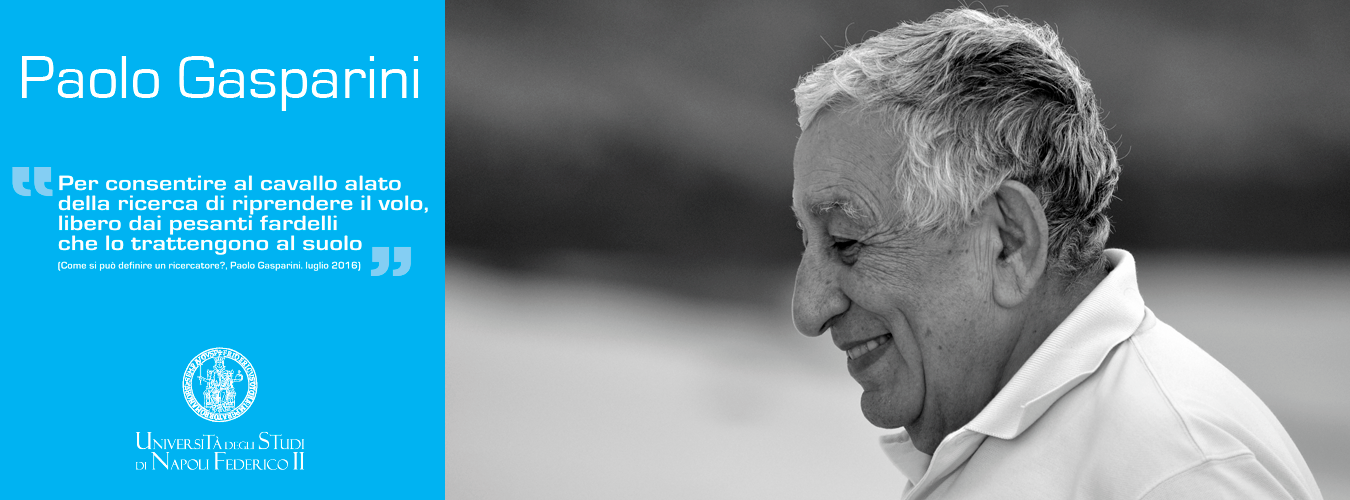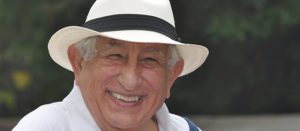
“The training of real researchers or scientists does not stop in their early years of research in a group, but must continue throughout their lives. Hence, besides individual study, a suitable environment is required. This is why international mobility is essential, understood not only as participation in conferences, but also as working in different laboratories and continuous interaction with colleagues from other universities.”
(How to define a researcher – Paolo Gasparini, July 2016)
Paolo Gasparini was born in Naples in 1937.
After classical studies at the Pontano Institute, he enrolled at the Faculty of Engineering, which he left after a stormy exam with Renato Caccioppoli, where he was given 18 out of 30 (a bare pass) and his student markbook was thrown out of the window.
He then enrolled for Geology where he obtained a first-class degree in 1961, after a thesis in Geophysics on Radioactivity on the Island of Ischia.
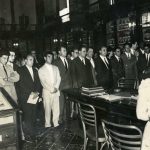
It was precisely during the preparation of his thesis that Paolo met, as he was returning from the island on a ferry, the great volcanologist Alfred Ritmann, who would become of fundamental importance for his development.
His academic route followed the classic pattern of the time: a National Research Council fellowship, a post as a Graduate Technician and, in 1964, Assistant Professor in the Chair of Geophysics. At the age of only 30 he qualified as a university lecturer, an essential step for his onward career. At this point there occurred a turning-point which was a novelty for the standard academic career path in Italy which was a hint of the enterprising aspect of his character: using a NATO fellowship he went to Rice University in Texas,
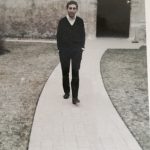
to perfect his knowledge of radioactivity of rocks and was then invited to the Lawrence Radiation Laboratory at Berkeley. Thanks to these experiences he published, together with John Adams, a book with Elsevier: Gamma-ray spectrometry of rocks.
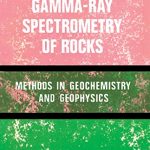
On his return to Italy, at the end of 1969, he began to form his own research group to study the radioactivity of rocks and geochronology. The first members of the group were the research fellow Lucia Civetta and the technician Nicola Roberti.
In 1970 he became Ordinary Professor Geophysics and, at the same time, Director of the same institute, as well as Director of the Vesuvian Observatory, a position he would hold until 1983.
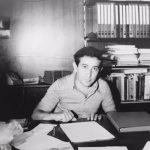
The Observatory had for years been administered with parsimony with no project of expansion despite the positions available. In a short time, young graduates were recruited from all the research groups of the Geophysics Institute, including Giuseppe Capaldi, Ignazio Guerra, Folco Pingue, Sergio Montagna. Massimo Cortini and Roberto Scandone.
In 1974 he became Coordinator of the Geodynamics Project (1974-1976), of which he had been an energetic promoter, which marked a revolutionary turning-point for Earth Sciences in Italy.
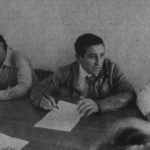
The project allowed the inclusion of Italy within the world of international research in the field of Earth Sciences. The number of works published every year in journals of great international reputation (Impact Factor did not yet exist) increased year on year. Finally, the project launched the National Groups of Seismology, Volcanology and Geohydrological Catastrophes who supplied a mass of scientific data of good, and in some cases, excellent quality which laid the basis for the implementation of a sound policy of land protection, and which have unfortunately not always been fully used.
Yet new interests attracted Paolo’s curiosity: he left Franco Barberi in charge of the Geodynamics Project and began to work on the Earth’s magnetism, subsequently going to Venezuela, Norway and finally Brazil where he stayed for several years as a Visiting Professor at the Astronomic and Geophysics Institute of the University of San Paolo.
After the 1980 earthquake of Irpinia and Basilicata he took steps to improve the seismic network. The Observatory was equipped for the first time with a suitable calculator with which to locate earthquake epicentres and the network of sensors was modernised. It was perhaps this experience that led him to explore the study of Radon as a precursor of eruptions and earthquakes.
Paolo also concerned himself with the industrial effects of research, leading him to co-found Geosystem S.r.l. in 1982, applying the knowledge developed in the world of oil-field research, geothermal energy and the creation of large infrastructural works.
In 1990 he became coordinator of the Research Doctorate in Geophysics and Volcanology, and in 2000 created the Research Doctorate in Seismic Risk, coordinated until 2006, with the aim of training researchers to possess transversal knowledge of all aspects connected with seismic risk, from the generation of earthquakes to propagation of seismic waves and seismic engineering.
In 1991 he was appointed President of the International Association of Volcanology and Chemistry of the Earth’s Interior (IAVCEI).
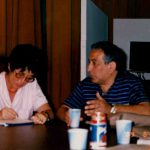
Also in this capacity Paolo worked to de-bureaucratise the Association, to make it participatory and lively via the enrolment of individual members, while until that moment it had been supported by the subscription of individual member states.
In 1993 he was awarded by the Italian President the Gold Medal for his services to science and culture.
From 1998 to 2000 he was coordinator of the European Project FP4 TomoVes (Seismic Tomography of Mt. Vesuvius). The Tomography of Vesuvius was one of the largest, most complex scientific experiments ever conducted on a volcano: an international operation which involved 25 different scientific institutes (from France, Switzerland, Germany, the USA and obviously Italy), with the contribution of about 100 students and researchers, and the decisive support of the Civil Protection Department and the Ministry of Defence.
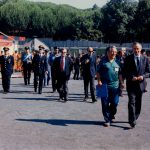
In the course of his long career Paolo Gasparini was a consultant for many International Agencies (including the World Bank, the United Nations, the U.S. Agency for International Development) and companies.
These activities, together with many international appointments, made Paolo a real citizen of the world, accompanied by a lifelong passion for jazz. On each trip he made a point of looking for venues that were off the beaten track.
As he tells in one of his accounts “When I come back from work in the evening and listen to a jazz record, I enter my space of serenity, I lower a curtain that separates me from everyday reality, behind which I make a trip in time …”
The author of more than 120 books and scientific papers, his last scientific interests focused on probabilistic methods of risk assessment, seismic hazard assessment and seismic early warning and in general on risk related to various natural and/or anthropogenic phenomena (see the list of publications).
He was a consultant on environmental matters for the European Commission. He was coordinator or member of the management teams of several large international projects financed by the European Community on the matter of environmental risk. He was Secretary of the International Commissions (ICEF and ICHESE) set up by the Italian Civil Protection to establish guidelines for the operative prediction of earthquakes and to define the possible interaction between gas/oil extraction and the occurrence of the earthquake in Emilia Romagna in 2002.
Paolo Gasparini took retirement in 2012 and was appointed Emeritus Professor.
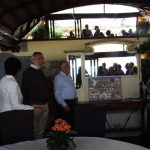
Yet his retirement did not coincide with the end of his research activities. Quite the opposite. In 2002 he had enthusiastically begun the adventure of the Regional Centres of Competence which would accompany him till the end.
He was the Scientist-in-Chief of AMRA (Analysis and Monitoring of Environmental Risk), converted into a Limited Company in 2005, and was President, Managing Director and also Coordinator of many European Projects Fp6-Fp7 and Horizon 2020, including NARAS, SAFER, REAKT, CLUVA, SHEER and ESPRESSO, focusing on issues concerning environmental risk. In these projects he gathered European partners from prestigious scientific institutes and universities, chiefly involving and stimulating young researchers.
The early years of AMRA saw the successful experimentation of immediate seismic alert, seismic early warning, to mitigate in real time the damage produced by earthquakes.
He always believed that scientific communication and dissemination to the public at large were indispensable elements, especially for risk reduction. In this context he pushed hard for the production of a four-monthly review “Environment, Risk and Communication” published by AMRA.
In the last few years he had focused on the energy sector. Experience and the large quantity of data gathered had firmly convinced him that there is no energy production which does not have the probability of constituting a risk for the population and for the environment in general. This led him to coin the slogan “No Risk No Energy”. In his writings and at conferences he stated that it was necessary to conduct thorough analyses of energy sources in question and of the risks that they entail, depending on contexts, objectives and their acceptability.
The clarity of his intuitions, the serene yet vibrant calmness with which he presented them to students, colleagues and friends made of him an extraordinarily positive example in the national and international context.
Download:
Curriculum Vitae
List of articles, scientific publications and books
CITATIONS Publish or Perish/Google
